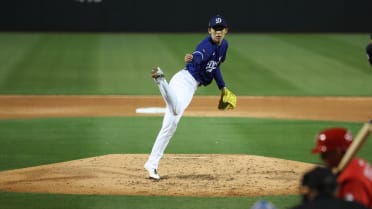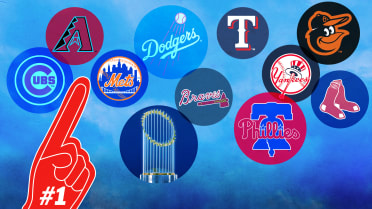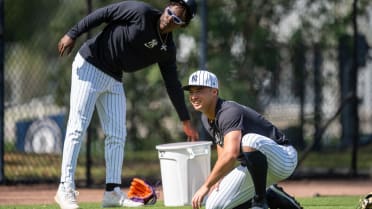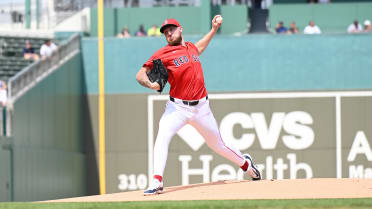Twins taking 'responsive' approach in '20 Draft
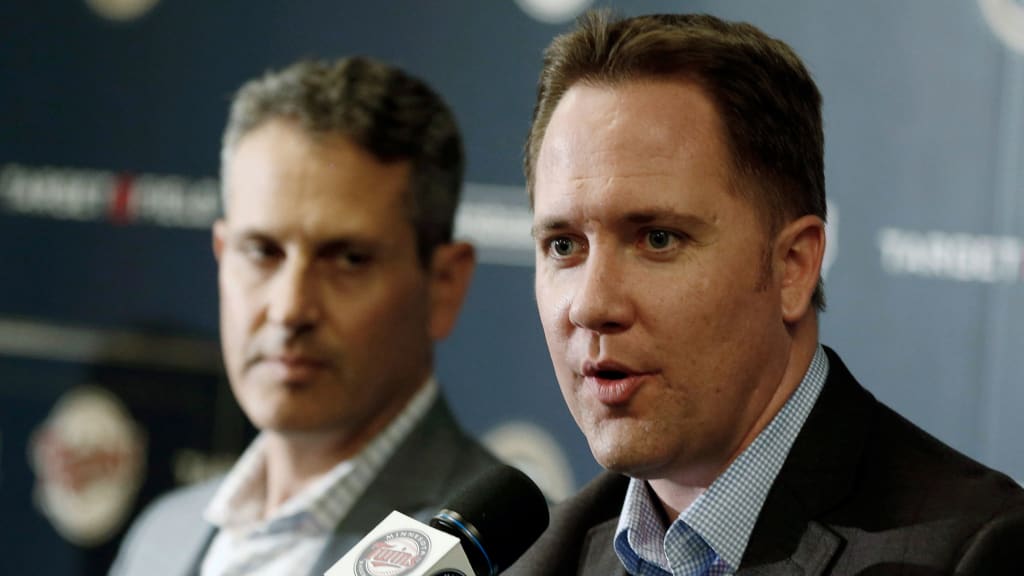
MINNEAPOLIS -- It's safe to say that this will be an MLB Draft unlike any we've seen before.
Amid the chaos and uncertainty of the ongoing coronavirus pandemic, the typical vastness of the Draft process has been condensed into only five rounds, with the ability for teams to scout recent performances and further refine their evaluation processes and Draft boards all but shut down by the pause of amateur play across the country.
But the Twins, like other teams, have adapted. With a smaller pool of Draft-probable players for evaluation, they've been able to gain a deeper understanding of some of their targets, with player development staff members and positional coordinators joining area scouts and leadership on calls with those amateur players to better evaluate fits. Those coordinators have also been able to help break down video of potential Draft selections to build a better knowledge base of skills.
The Twins have also prepared for the unique structure and process of the Draft itself by reaching out to teams in other sports, particularly the NFL, which has already gone through the process of a remote Draft.
"We recognize the challenge, and this isn't unique to the Twins," said chief baseball officer Derek Falvey. "The challenge is that we haven't had a scouting season for the spring. But because [director of scouting Sean Johnson] and that group in particular have instilled such an incredible work ethic in our scouts in the amateur space, they worked so hard in the summer and fall to get as much perspective as they can on those players before going into the spring."
Though the Twins have selected relatively high in the first round in each of the three Drafts led by the team of Falvey, general manager Thad Levine and Johnson, there's added uncertainty stemming from the fact that they make their first selection this year at No. 27 -- the by-product of a 101-win season in 2019 -- and will thus need to be more responsive to the trends and selections of the teams above them.
"My sense is that we have a decent idea, I would say, of five or six players that we think could be there that are guys that we like that we would probably have a little higher on the board," Falvey said. "I would anticipate the first round maybe playing out the way some people think, generally speaking. After that, I think all bets are off at that point in terms of how these things shake out. That's when the things get harder to differentiate in a normal year, and this will certainly layer on another challenge."
As though that isn't enough, the Twins are limited even further by having only four selections across the two days of the Draft tonight and Thursday.
They would normally have a selection in the Competitive Balance Round B, following the second round, but that pick at No. 66 overall was traded to the Dodgers in the Kenta Maeda deal. Minnesota also forfeited its third-round selection after signing Josh Donaldson in free agency. As a result, the Twins will make their first two picks at No. 27 and No. 59 before waiting until the end of the fourth round to make their next selection.
And this season, there will also be far more work to complete following the end of the Draft, as a massive group of undrafted free agents will become available to all clubs, with no limit on how many of those players can be signed by each team. With geographic, financial and other considerations all likely to come in play among those competing teams, the post-Draft process should also be more action-filled than ever before.
"To say we have a great grasp on how that will go will be foolish right now," Falvey said. "We don't know exactly, based on who gets drafted and who's available. But what I will say is that everything around our player development group and system, we're going to make sure we pitch to players to make sure they understand the resources we invest in them.
"[Undrafted pitcher] Randy Dobnak is a great story that we will continue to use in the sense that he came on from independent ball and developed and was a big part of our club and will continue to be. We put the resources in whether you're a first rounder or ultimately someone that signed out of independent ball. So I hope that differentiates us, because I do believe it's something that we live and breathe on a daily basis."
Day 1 of the 2020 Draft airs tonight on MLB Network and ESPN at 6 p.m. CT, and includes the first 37 picks. Day 2 begins at 4 p.m. CT on Thursday on MLB Network and ESPN2, and spans the remainder of the 160 picks.
Comprehensive coverage will be available on MLB.com and MLB Pipeline, which will simulcast MLB Network’s broadcast. Go to MLB.com/Draft to see when teams pick, the Top 200 Prospects list, mock Drafts from analysts Jim Callis and Jonathan Mayo, scouting video and more. And follow @MLBDraft and @MLBDraftTracker on Twitter to see what Draft hopefuls, clubs and experts are saying and to get each pick as it’s made.
Here’s how the Draft is shaping up for the Twins, whose first selection is the 27th overall pick:
State of the system
Even after trading top pitching prospect Brusdar Graterol to the Dodgers in the deal that brought Maeda to the Twin Cities, the organization is in great shape. Heralded hitting prospects like Royce Lewis, Alex Kirilloff and Trevor Larnach have all made their way to the high Minors together, while Jordan Balazovic, Jhoan Duran and Edwar Colina are among the next wave of strong pitching prospects that could also graduate to the Majors soon. There's plenty of athleticism around the diamond, too, with toolsy shortstops and center-field types aplenty among the club's Top 30 Prospects, giving the club not only high-upside projectability from select prospects, but also solid depth and possible positional flexibility across the board.
What they're saying
"I would say that the way we're approaching this Draft, obviously, picking at the back end of the first round is a good thing because it means you've had a nice year in the year before, but it also makes it a little bit harder to try and narrow your focus going into these meetings -- especially this year, because there's just so much uncertainty as to how this may shake out. We think there's disparity between scouting opinions in most years. I think this year will be more so. When you think about that, we have to be prepared for all avenues.
"I guess I would say that our expectation over the course of the first five rounds this year will be to continue to select who we think will be the best player on the board and who fits us the best. I would hope that afterwards, when we have the ability to have some conversations with some players who may sign at the free-agent process, we can find a way to fill out some areas of depth or need. We'll always continue to take the approach of best available player." -- Falvey
Who might they take?
Given the unique circumstances, it's even tougher than usual to predict who might be available to the Twins at No. 27, but both Jonathan Mayo and Jim Callis at MLB Pipeline appear to expect Minnesota to select a collegiate player with their first-round pick. In their early mock drafts, they both predicted that the Twins would take Baylor shortstop Nick Loftin, a contact hitter who was named first team All-Big 12 in 2019 and a second team preseason All-American in '20 by D1Baseball and Baseball America. Loftin hit .316/.374/.484 at Baylor with only 48 strikeouts in 121 games.
In the most recent mock Draft, Mayo has mentioned Mississippi State second baseman Justin Foscue, while Callis' latest board has the Twins taking South Carolina right-hander Carmen Mlodzinski, whose middling collegiate stats don't necessarily reflect his high-end stuff and upside. Unsurprisingly, Callis mentions that the Twins have been associated with mostly college pitchers and hitters.
Money matters
Each team gets an allotted bonus pool equal to the sum of the values of its selections in the Draft. The more picks a team has, and the earlier it picks, the larger the pool. This year, with a five-round Draft, all signing bonuses of drafted players will apply toward the bonus pool total.
For 2020, there is a $20,000 limit on bonuses for non-drafted free agents. There is no limit to the number of undrafted players teams may sign, but they cannot go over $20,000 per player. These bonuses do not count toward the pool total.
The Twins have a pool of $4,528,600 to spend, including $2,570,100 to spend on their first selection.
Shopping list
As mentioned above, the Twins have quite the well-rounded system, with plenty of high-upside pitching and hitting talent available throughout the organization and athletic middle-infield and center-field types scattered at various levels. Still, the Twins could probably afford to build out their depth at first base and catcher.
Alex Kirilloff and Brent Rooker are both outfielders with the ability to swing to first, but there's a sudden dearth of depth behind them in the organization. The Twins traded Lewin Diaz to the Marlins in the Sergio Romo deal and moved Luke Raley to the Dodgers, and Ryan Costello tragically passed away in New Zealand before the start of the Australian Baseball League's season. The Twins have two high-end catching prospects in Ryan Jeffers and Ben Rortvedt, but there will likely be a need to create a more robust pipeline throughout the organization since Jeffers' graduation to the Majors is expected to occur by 2021 at the latest.
Trend watch
It's hard to draw any definitive conclusions from the three drafts that have been helmed by Falvey and Levine since their hirings, but the Twins have skewed heavily towards the collegiate ranks in that time. Last season, the Twins selected college talent with 33 of their 41 selections, including 24 of their first 26 picks. During the top five rounds of the last two Drafts, the Twins used nine of their 10 selections on college talent. It is worth noting, though, that the club selected three high school players and one out of junior college within the first five rounds in 2017.
The Twins have been receptive to using early first-round picks on high-upside, athletic high school talent, as they did with the No. 13 selection in 2019 (Keoni Cavaco) and the No. 1 pick in '17 (Lewis). But they have used their later picks in that first-round range on high-floor college bats, like the No. 39 pick in '19 (Matt Wallner), the No. 20 pick in '18 (Larnach) and the No. 35 selection in '17 (Rooker). That might be more applicable for this draft, where the Twins select towards the end of the first round at No. 27.
The recent top picks
2019: SS Keoni Cavaco, Eastlake HS, Chula Vista, Calif.
2018: OF Trevor Larnach, Oregon State
2017: SS Royce Lewis, JSerra Catholic HS, San Juan Capistrano, Calif.
2016: OF/1B Alex Kirilloff, Plum HS, Pittsburgh
2015: LHP Tyler Jay, Illinois
Do-Hyoung Park covers the Twins for MLB.com.

